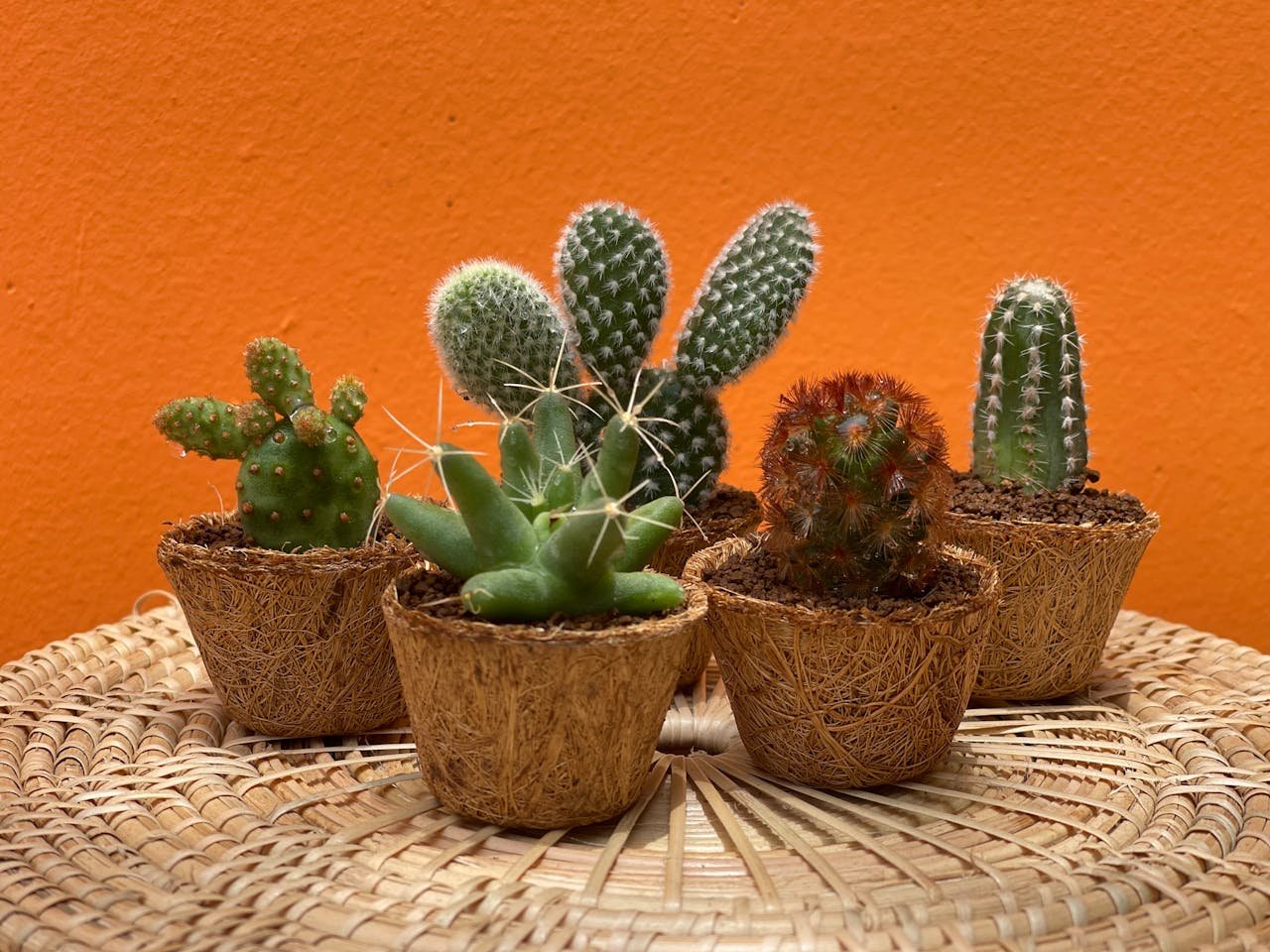When the heat is relentless and water is scarce, drought tolerant cacti prove they’re among the toughest plants on Earth. These resilient beauties thrive where most plants wilt, making them ideal for gardeners in arid zones, minimalists, and anyone looking for low-maintenance greenery.
From sculptural silhouettes to radiant blooms, drought tolerant cacti offer far more than survival—they bring character, texture, and charm to any garden or indoor space.
Whether you’re planting in the scorching UAE sun or curating a water-wise landscape in Southern California, this guide is packed with everything you need to know to grow and care for cacti that flourish with very little water.
Let’s explore what makes these desert dwellers so special—and why they may be the perfect fit for your space.
What Makes a Cactus Drought Tolerant?
Not all cacti are created equal when it comes to surviving drought. Some have evolved incredible adaptations to go weeks or even months without water. Here’s what sets them apart:
Thick, Water-Storing Stems
Cacti have fleshy, ribbed stems that can expand to store water like a sponge. This allows them to absorb rain quickly and retain moisture for long periods.
Minimal Leaf Surface
Instead of traditional leaves, most cacti have spines. This adaptation dramatically reduces water loss through evaporation.
Shallow, Wide-Spread Roots
Many drought-resistant cacti have shallow root systems that spread widely near the surface, allowing them to soak up even the smallest amounts of rainfall.
Waxy, Protective Skin
A thick, waxy coating on the skin (called a cuticle) helps prevent moisture loss, even in blistering sun.
These traits, combined with their often slow growth rate, allow drought tolerant cacti to endure dry spells gracefully.
Top Drought Tolerant Cacti You Can Grow
Not sure where to start? Here are some of the most beloved cacti that thrive in arid, water-scarce environments—perfect for outdoor xeriscaping or indoor low-water gardening.
1. Golden Barrel Cactus (Echinocactus grusonii)
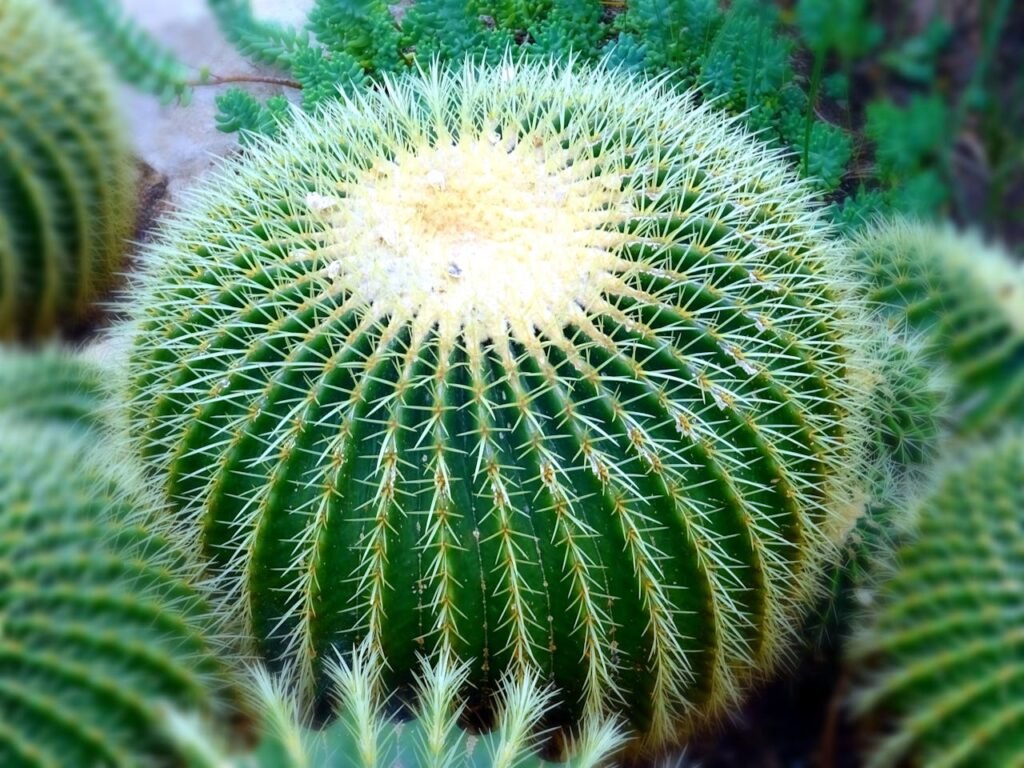
Known for its striking round shape and golden spines, this cactus is a classic in desert gardens. It needs full sun and barely any water, making it ideal for rock beds or minimalist patios.
2. Prickly Pear Cactus (Opuntia spp.)
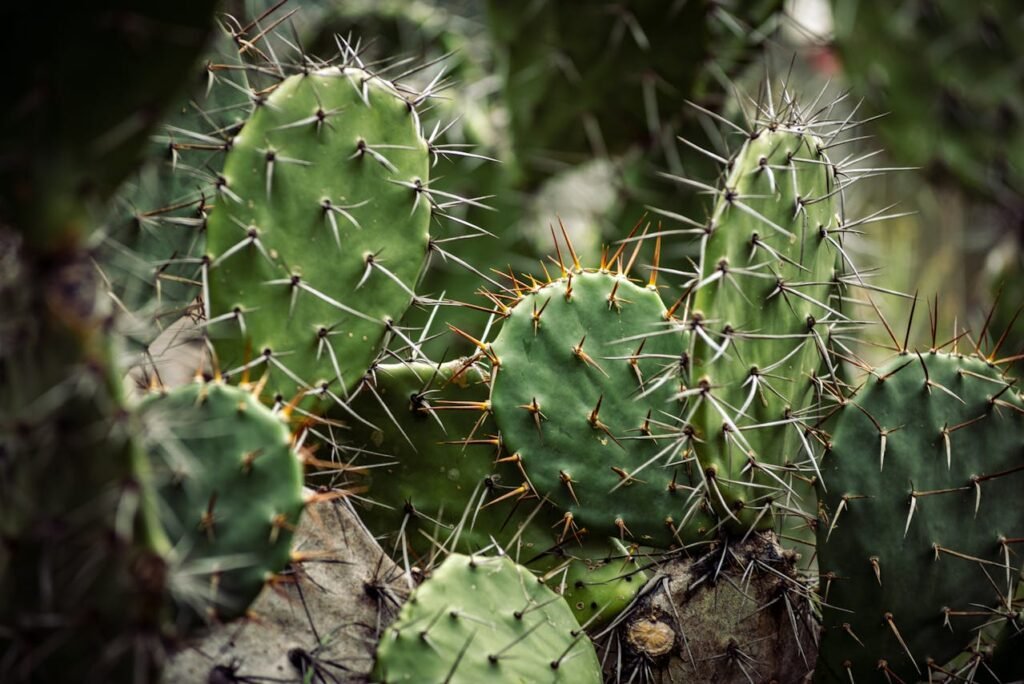
One of the most versatile and hardy species, prickly pear features flat, paddle-like pads and beautiful blooms. It thrives in full sun and poor soil, and once established, it can go weeks without water.
3. Saguaro Cactus (Carnegiea gigantea)
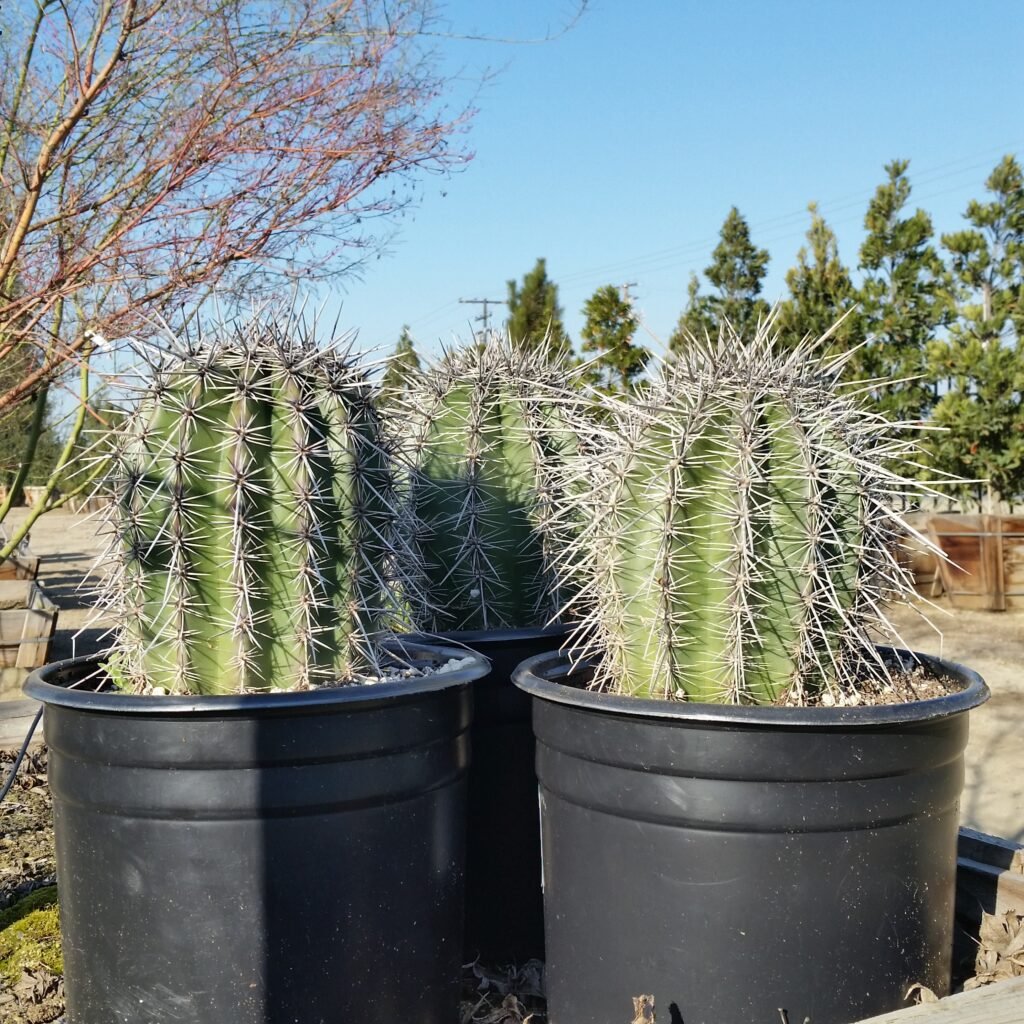
The towering icon of the American Southwest, saguaro cacti are slow-growing but deeply resilient. These majestic giants require well-draining soil and minimal watering.
4. Totem Pole Cactus (Lophocereus schottii var. monstrosus)
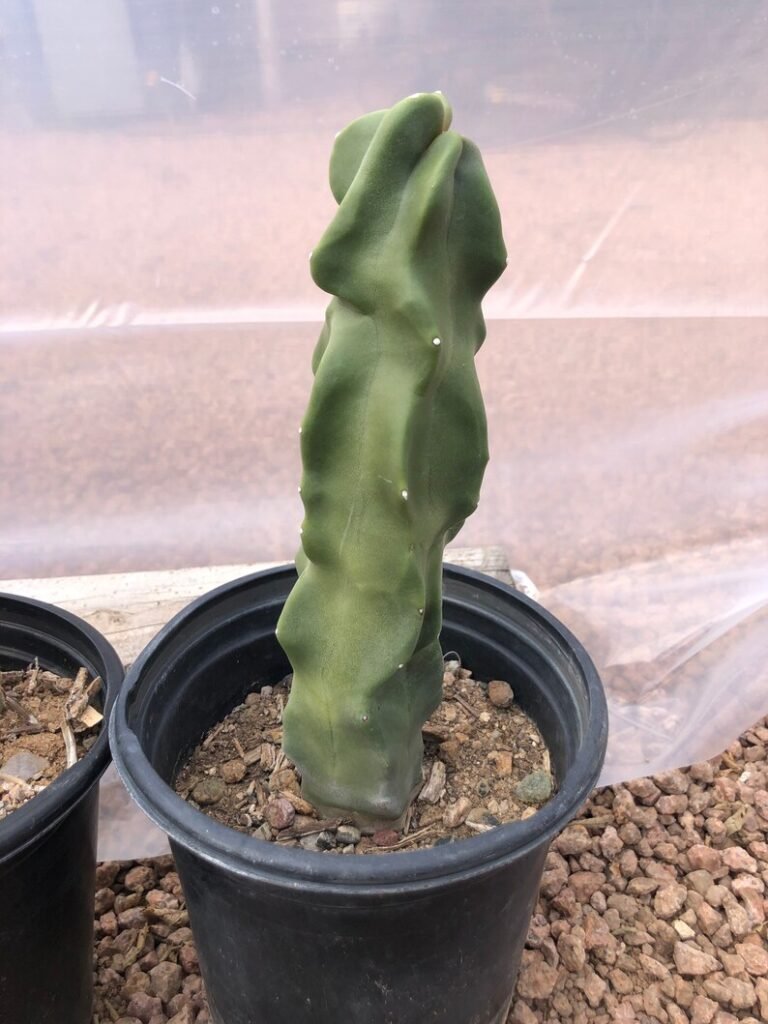
This spineless, sculptural cactus is perfect for contemporary landscapes. It stores water efficiently and thrives in full sun with sparse watering.
5. Fishhook Barrel Cactus (Ferocactus wislizeni)
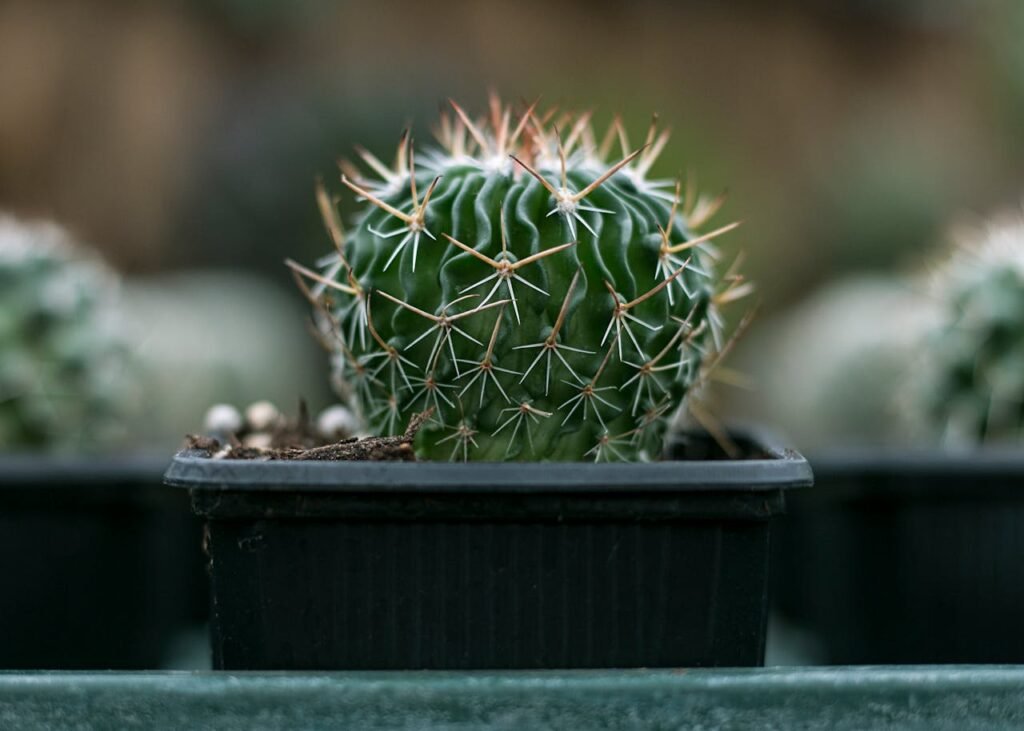
With curved spines resembling a fishhook and vibrant red or yellow flowers, this cactus brings both beauty and resilience to the garden.
6. Hedgehog Cactus (Echinocereus spp.)
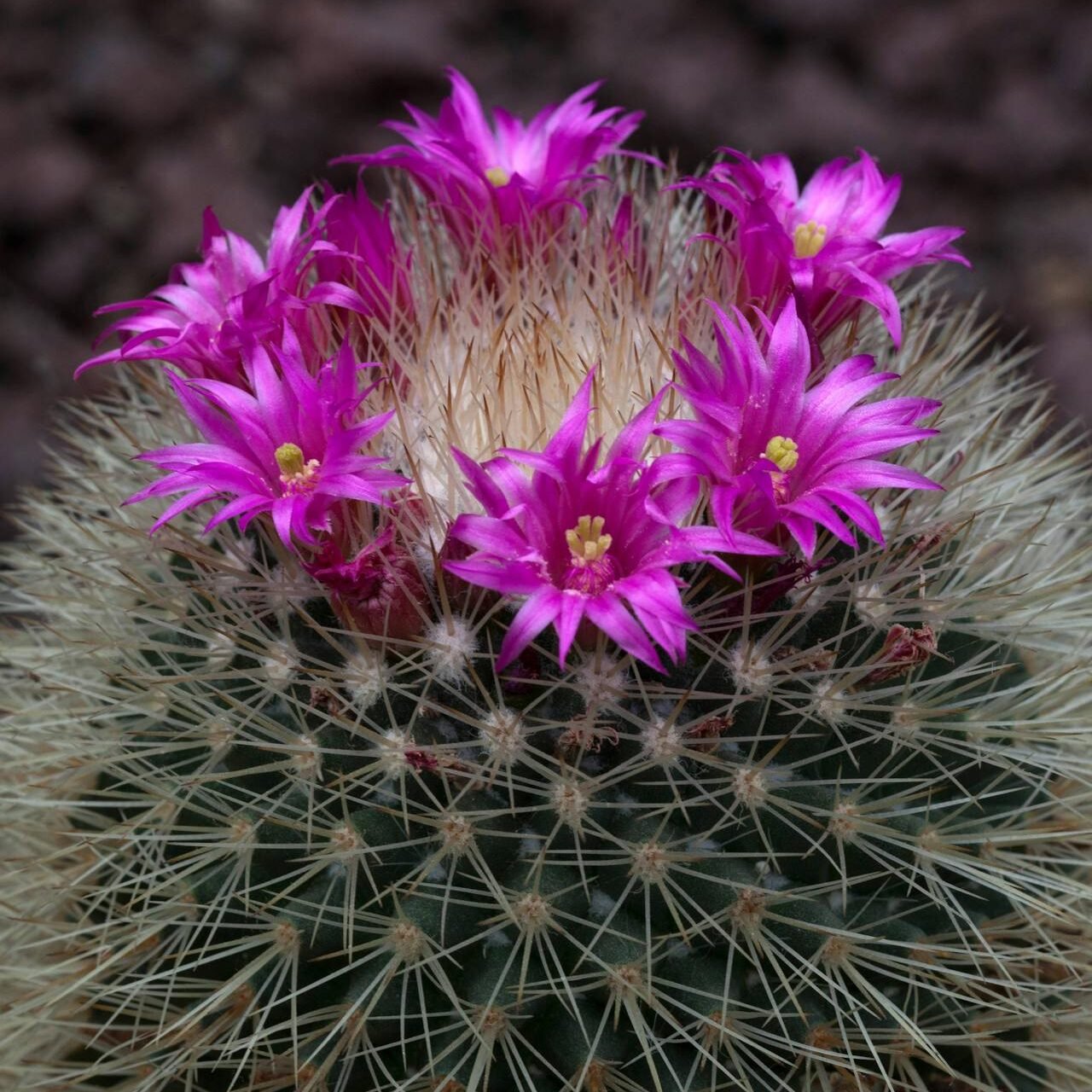
Compact and often covered in vivid blooms, hedgehog cacti are excellent choices for smaller spaces. They need minimal irrigation and lots of sun.
7. Beavertail Cactus (Opuntia basilaris)
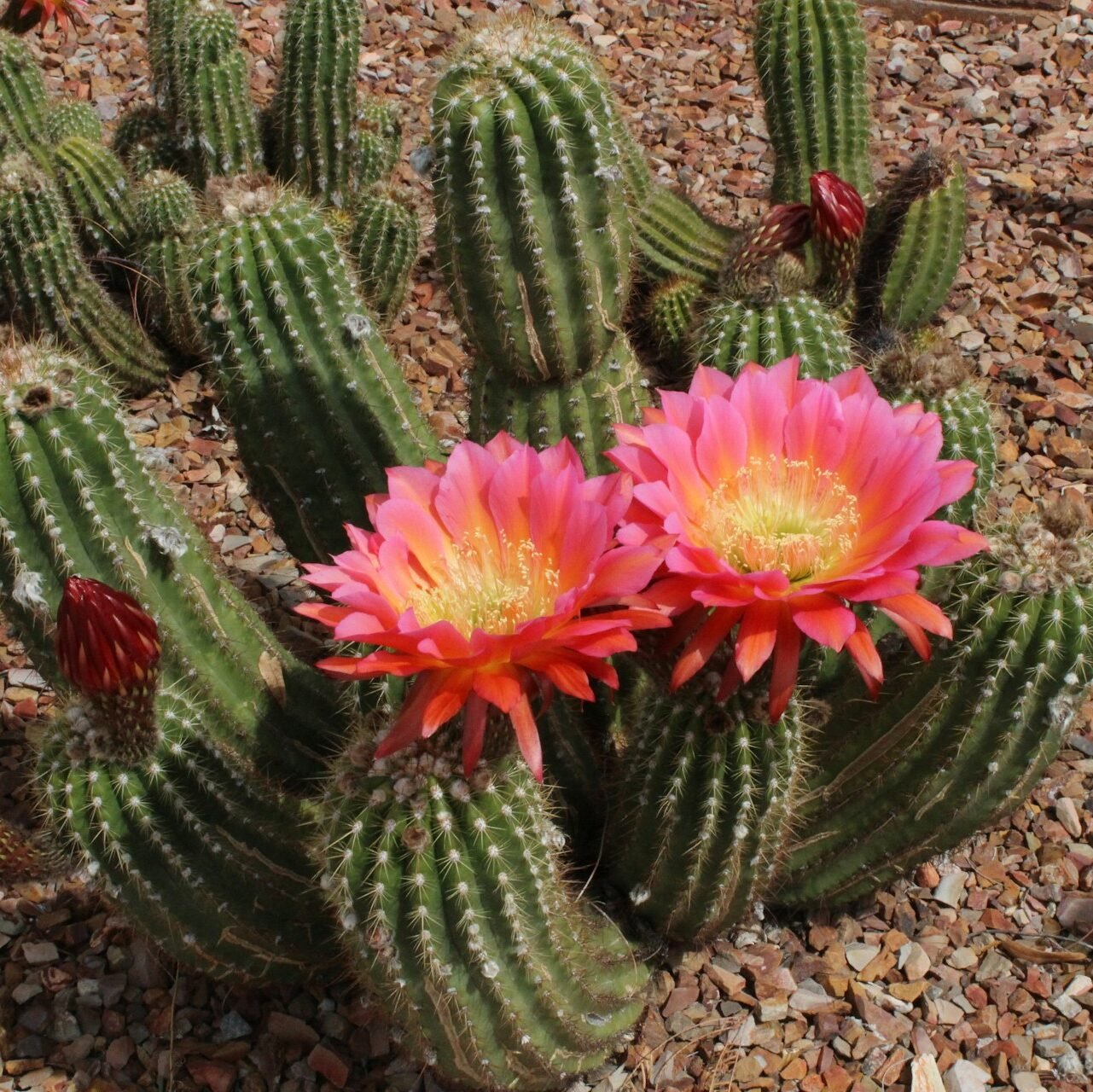
Soft to the touch (relatively), and with striking pink blooms, beavertail cactus is native to desert regions and can handle extreme heat and dryness with ease.
These are just a few examples of the best drought tolerant cactus species—each with its own personality and charm.
Why Choose Drought Tolerant Cacti for Your Garden or Home?
Besides their striking aesthetics, there are several compelling reasons to incorporate drought tolerant cacti into your space:
- Water efficiency: Perfect for regions with water restrictions or those seeking sustainable landscaping.
- Low maintenance: Once established, they require little attention.
- Great for beginners: Hard to kill, especially if you forget to water.
- Architectural appeal: They offer sculptural form and visual drama year-round.
- Diverse applications: From container gardens to vast xeriscapes, there’s a cactus for every setting.
These plants let you embrace green living without the usual gardening fuss.
How to Prepare the Right Soil for Drought Tolerant Cacti
Soil plays a massive role in the success of any cactus, especially those accustomed to dry conditions. The wrong soil can hold too much water and lead to rot—a cactus grower’s worst nightmare.
Go for a Fast-Draining Mix
The key is excellent drainage. Look for cactus-specific potting soil or create your own by mixing:
- 1 part potting soil (without added fertilizers)
- 1 part coarse sand or perlite
- 1 part pumice or crushed lava rock
This combination allows water to flow through quickly, preventing roots from sitting in moisture.
Avoid Heavy Soils
Standard garden soil or anything rich in organic matter tends to hold water—great for veggies, terrible for cacti. These heavy soils can suffocate roots and promote fungal growth.
Consider Adding Grit
In especially wet or humid environments, some cactus growers add extra grit like small stones or gravel to ensure the roots stay dry and oxygenated.
Watering Tips for Drought Tolerant Cacti
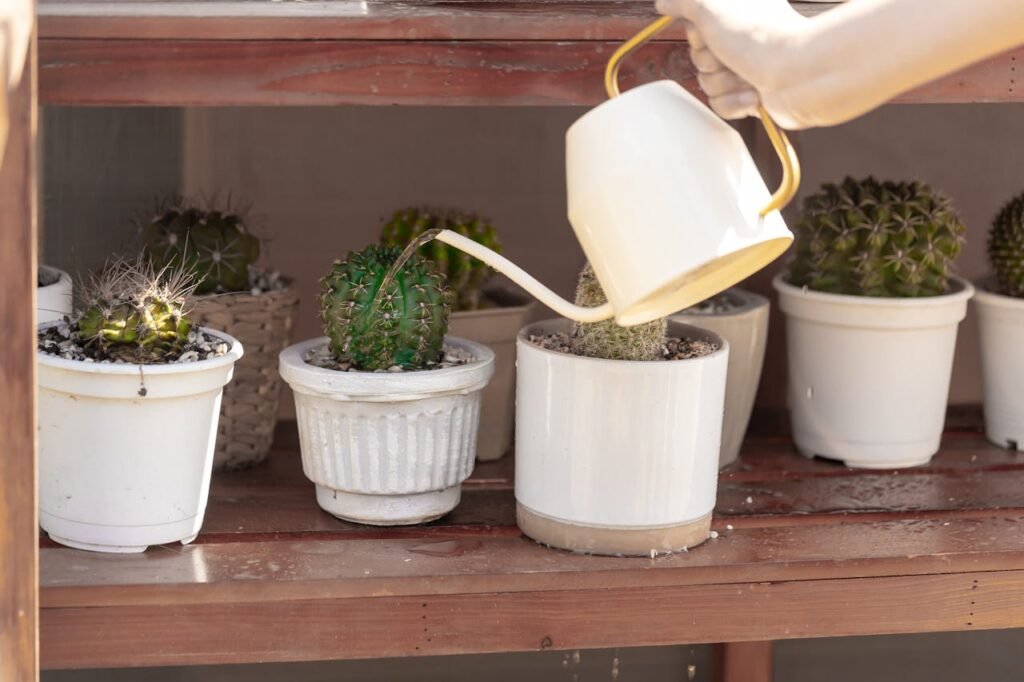
The beauty of drought tolerant cacti is how little water they need—but that doesn’t mean you can forget about them entirely.
Water Deeply, But Infrequently
When you water, soak the soil thoroughly, then allow it to dry out completely before watering again. This mimics the natural desert cycle of rare, heavy rains.
Adjust Based on the Season
In the growing season (spring and summer), your cactus may need water every 2–3 weeks. In winter, some species can go 4–6 weeks or more without any watering at all.
Watch for Signs of Overwatering
Mushy stems, brown or black spots, or collapsed sections often mean too much water. It’s better to underwater than overwater.
Light and Heat: Key to Cactus Success
Full Sun is a Must
Most drought tolerant cacti love direct sunlight. They do best with at least 6–8 hours of full sun per day, especially outdoors.
Indoor Sunlight
For indoor cactus lovers, a south- or west-facing window is ideal. If natural light is limited, a grow light can help simulate desert-like brightness.
Handle Extreme Heat Carefully
While these cacti are heat-tolerant, young or potted plants can get sunburned in very hot climates. Transition them gradually to full sun and provide a bit of afternoon shade in peak summer if needed.
Container Growing vs. In-Ground Planting
Both methods work beautifully—it just depends on your space and climate.
Container Gardening
Perfect for patios, balconies, or homes without yard space. Use pots with drainage holes and well-draining soil. Terra cotta pots are ideal as they allow excess moisture to evaporate.
In-Ground Planting
If you live in an arid region like Arizona or the Middle East, you can plant drought tolerant cacti directly in the ground. Just make sure the soil is sandy or rocky and avoid planting in low spots where water pools.
Fertilizing Cacti: Yes or No?
Cacti don’t need much feeding, but a little boost in the growing season can promote healthy growth and flowering.
Use a Balanced Fertilizer
Choose a low-nitrogen, water-soluble cactus fertilizer. Dilute it more than the instructions suggest—these plants don’t need much.
Once or Twice a Year is Enough
Feed your cactus once in early spring and again in midsummer if it’s actively growing. Skip feeding during the dormant winter months.
Common Mistakes with Drought Tolerant Cacti
Even though they’re tough, there are a few missteps to avoid:
- Overwatering: The #1 killer of cacti. Always let soil dry out completely.
- Poor drainage: Make sure your pot or garden bed allows excess water to escape.
- Too little sunlight: Without enough light, cacti may become elongated or pale.
- Planting too deeply: The crown should stay above soil level to avoid rot.
- Ignoring pests: Yes, even cacti can get mealybugs and spider mites. Keep an eye out!
These mistakes are easy to fix once you know what to watch for.
Caring for Drought-Tolerant Cacti: Practical Maintenance Tips
While drought-tolerant cacti are famously low-maintenance, they still appreciate some routine care to help them thrive. These cacti are experts at surviving long dry periods, but consistent habits can make the difference between survival and lush, vibrant health.
Start by watering deeply but infrequently. This mimics natural desert conditions where rain comes in short, heavy bursts. Always allow the soil to dry completely between watering sessions. Use a moisture meter if you’re unsure—overwatering remains the biggest risk, even for drought lovers.
Pruning is not always necessary, but it can help remove dead pads, blooms, or damaged sections that attract pests. Use clean, sharp tools, and always wear gloves for spiny varieties. For flowering species like Rebutia or Echinopsis, remove spent blooms to encourage more prolific blooming in the next cycle.
Dust and grime can build up on cacti, especially indoors. A soft brush or damp cloth can gently remove buildup, letting the cactus breathe and photosynthesize better.
Finally, fertilize sparingly. Use a diluted cactus fertilizer once during spring or early summer. Avoid heavy feeding, especially in late summer or fall, as it may encourage growth when the plant is preparing for dormancy.
Ideal Companion Plants for Drought-Tolerant Cacti
Pairing your cacti with other drought-hardy plants can create a stunning and water-wise landscape. Aloe vera and Agave varieties share similar water and light preferences. Euphorbias, Sedums, and even ornamental grasses like Blue Fescue can offer contrast in both color and texture while keeping the garden low-maintenance.
For a touch of bloom, Portulaca or Gazania are vibrant choices that don’t need much watering. Consider grouping cacti with plants that have the same soil needs and sun exposure to avoid watering conflicts.
In containers, mix small Mammillaria or Notocactus with trailing succulents like String of Pearls to create eye-catching arrangements. Make sure the roots have similar depth and space requirements to avoid overcrowding.
Pots and Planters: Best Choices for Drought-Resistant Cacti
Choosing the right pot makes a big difference in keeping your cactus dry and healthy. Terracotta pots are a classic favorite—porous and breathable, they allow moisture to evaporate quickly and prevent root rot. Unglazed clay is ideal for cacti that really dislike humidity.
Concrete planters offer durability and a modern look, while also absorbing some water and heat, which benefits desert dwellers.
Wooden planters can work, too, but make sure they have adequate drainage holes and aren’t made of treated wood that may leach chemicals.
Glass terrariums, while beautiful, are not usually a great choice for drought-tolerant cacti unless modified with excellent drainage and ventilation.
Plastic pots are lightweight but retain too much moisture—only use them if you can manage watering precisely.
Always prioritize containers with good drainage, and when in doubt, drill extra holes. Even drought-tolerant cacti suffer in stagnant, soggy soil.
Design Ideas with Drought-Tolerant Cacti
Whether you’re landscaping a modern backyard or styling a windowsill, drought-tolerant cacti offer a world of creative potential. For outdoor gardens, consider creating a rock or gravel bed using Golden Barrel, Opuntia, and Totem Pole Cactus interspersed with boulders and dry wood for a dramatic, arid feel.
For a minimalist indoor look, use matching terracotta pots and arrange a trio of columnar cacti in a sunny corner. Add sand or fine gravel as a top dressing to complete the desert aesthetic.
Vertical gardens using shallow, wall-mounted planters can be an unexpected way to show off trailing or clumping drought-tolerant species. And for festive décor, small flowering cacti like Rebutia or Parodia in painted ceramic pots make great seasonal centerpieces.
Mixing colors, heights, and textures adds vibrancy. Use the bold upright form of Organ Pipe Cactus next to the spherical shape of Golden Barrel and the sculptural drama of Agave for depth and visual interest.
Final Thoughts
Drought-tolerant cacti are nature’s answer to water-wise, low-effort, yet visually stunning gardening. These resilient plants are more than just survivors—they bring architectural flair, surprising color, and even flowers into landscapes and homes with minimal demands.
Whether you’re new to gardening or a seasoned collector, these cacti make it easy to build a vibrant, sustainable space. Just remember: the right pot, the right soil, and careful watering go a long way.
With thoughtful combinations and creative styling, drought-tolerant cacti can transform balconies, windowsills, and gardens into striking green sanctuaries that thrive even in the harshest conditions. They’re proof that tough love can sometimes grow the most beautiful things.
